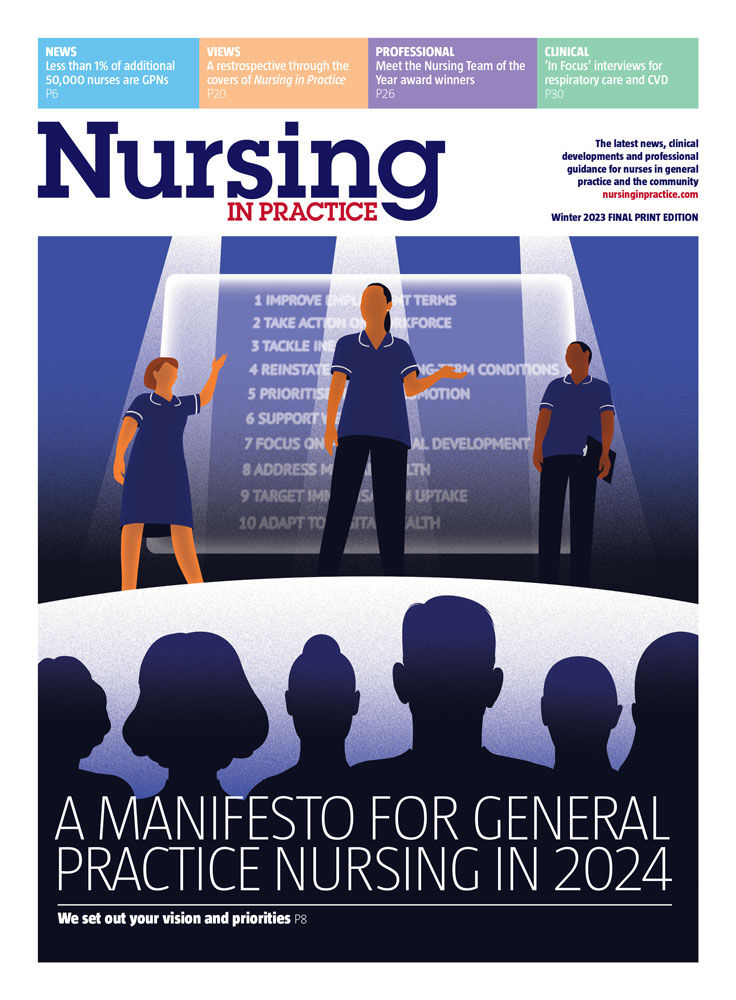Key learning points:
– Introduce the context of anger management
– Review therapeutic approaches to anger management
– Reflect on your therapeutic approach
Anger and aggression can be viewed as both a problem and a normal part of development, as both benefits and risks to the individual can be observed.1,2 Anger consists of four interacting events: external events and internal cognitive, emotional, physiological, and behavioural reactions that have a reciprocal relationship with each other.3,4,5 However, much harm can be expressed by over and inappropriate expression of anger with a high cost to the individual and society.6
Thirty two per cent of UK adults say someone close to them has a problem with anger, and 64% of UK residents believe that people in the UK are becoming more angry.7 Anger is not just a problem with adults, 48,000 children under the age of 11 were sent home from school in 2007 for angry or aggressive behaviour.8 The overall rate of permanent exclusions from school is six per 10,000 pupils with fixed exclusions at 350 per 10,000.9 Exclusions are given for a variety of reasons with persistent disruptive behaviour accounting for approximately a third, 17% for physical assault on another pupil and 11% to staff with verbal abuse to both adults and other children 15%.10
There are a variety of problems associated with anger: physiological complaints, drug abuse, psychopathology, and aggressive or violent behaviour. The Corporate Alliance, an organisation supported by Public Health England, estimates the national cost to be £5.5 billion with £1.6 billion being comprised of costs for physical and mental health.11 As well, these costs are incurred in the criminal justice system, housing and refuge, civil legal and lost economic output.
The current status
Michael Saini, following a meta-analysis of the literature concludes that “overall, treating anger with psychological treatments is beneficial”12 and there is evidence to support cognitive and behavioural interventions.2 Approaches refer to anger as both state and trait emotion. State anger is the internal affective experience to the experience of the moment. Trait emotionis the propensity to experience state anger across time and situations (trait and situation specific anger).4 The effects of anger are not wholly without risk and these effects are not just on other people. There is a growing body of understanding regarding the deleterious effects that anger has on general health6 and the cardiac or carcinogenic effects of either expressing anger or withholding it.13
Raymond Novaco, professor of psychology and social behaviour at Indiana University, is credited for carrying out one of the first anger control studies.5 His influential work has been followed by numerous similar developments into cognitive and cognitive relaxation approaches to manage anger. In developing an approach to anger management, cognitive behavioural therapy (CBT) and cognitive therapy (CT) has informed the debate more than any other psychological method.
Cognitive behavioural therapy
CBT is an approach to anger control that aims to help individuals identify and manage cognitive, behavioural and physiological responses to perceived threat or provocation. This helps the person see more/different alternatives to their situation, obstacles to their thinking, and therefore “aims to free patients to ways of interpreting and reacting to their situation, drawing from the fullest range of alternatives available”.14 CBT for anger generally relies on a ‘present’ approach to managing problems rather than looking back at early life.15 CBT approaches to anger management have shown to be effective in reducing anger in various populations.16
Enhanced emotional awareness
Enhanced emotional awareness targets the whole emotional experience, delineating the ‘it just happens experience’ and automatic response to one of better recognition and understanding. The individual is trained to be a careful observer of the internal and external prompts to anger. So the anger becomes one that can be predicted and therefore modified, hence improved coping can be seen, as the person becomes more aware of anger provoking stimuli. Awareness involves self-monitoring to yield information about angry incidents. The person imagines or role plays angry situations and attempts to create ‘hot’ emotions, and cognition therapy itself presents opportunities for self-management. Deffenbacher comments on the intersubjective experience of the ‘therapy session’ as a management tool because during ‘visualisation’ the client may become angry when recalling and describing some event, or may become angry with the therapist.4
Stimulus control and response disruption strategies
This approach targets immediate response and pre-anger state variables, this is to either remove/reduce the saliency of the angry response or actively disrupt anger responding so it cannot continue. It includes planning avoidance of provocation by looking at explosive points and trying to engage others in reducing their role in angry outbursts. For example, physically distancing the individual from provocative cues (ie leaving the room or getting someone else to) and engaging physical, mental and behavioural distraction (rubber band, pencil (sharp end) and self-statements.4
Relaxation interventions
Developing calmness enables the person to think and it is suggested that relaxation alone can be as effective as cognitive strategies in achieving this.17 Relaxation is applied to visualised anger scenes and then to reduce the arousal. Initial sessions are devoted to self-control and learning relaxation methods. The remainder of the sessions continues this practice and habituation.5 A combination of relaxation and other approaches finds the relaxation coping skills effective in reducing anger and general anxiety.18
Relaxation can be effective as a strategy when delivered in a consistent self-control training format.15 Deffenbacher suggests that the relaxation component makes therapy more progressive and less combative.17
Cognitive therapy and stress inoculation training
Novaco5 and Meichenbaum’s19 stress inoculation training (SIT) was the first set cognitive approach in generating interest in self-instruction training.
Cognitive therapy (CT) views arousal to anger as having autonomic, central nervous system and cognitive components. Cognitive strategies include: questioning the evidence; examining options and alternatives; de-catastrophizing; pros and cons of anger expression; thinking positively; noticing and monitoring anger and thoughts; being congruent; ‘then what’ techniques suggesting alternative strategies and finally cognitive rehearsal.20
In this way behaviour changes can be brought about by changing the self-instructions that patients give themselves, to more adaptive self-talk and reminders to use coping skills.2,21
SIT has a number of steps, initially recognition and self-monitoring of anger frequency, intensity and situational triggers to outline the problem through an anger diary.
Next, the construction of personal anger provocation hierarchy, with a strong focus on collaboratively exploring errors and distortions in the clients’ thinking… what is another way of looking at that?
Thirdly, arousal reduction techniques of progressive muscle relaxation, breathing focused, modifying appraisals, and using self-instruction. Fourth, training in behavioural coping, communication and assertiveness skills. Finally, there is rehearsal and transfer activities. Anger controls are practised while visualising and role-playing progressively more intense anger arousing scenes from the personal hierarchies.22 Use of relaxation techniques are helpful here, as is the role of humour.4
There is some criticism that the approach made people avoid social interaction but the findings of Novaco5,23 endorsed the cognitive self-control procedures for the regulation of anger and enabled a body of evidence to develop in managing this critical area of human emotion.
Behavioural skill building/social skills training
Social skills training is based on the principles that individuals have learned non-adaptive skills, the role of social skills in anger management is to focus on conflict skills. As the conflict escalates poor responses (eg previously learned negatively reinforced responses) further antagonise others. Socialskills training targets these deficits, usually in groups by addressing the behavioural consequences of anger by teaching the individual more assertive ways of behaving when angry.24 Most research finds long-term effectiveness from skills training. However, Glancy and Saini’s16 review notes a study in 1992 by Forbes et al who found no significant gain.
Problem solving
Problem solving (PS) is a systematic approach to solving a problem, it includes:
A.Define the problem.
B.Develop a multitude of solution.
C.Implement and evaluate the ‘best’ solution.
The outcome would be to help the individual develop a differing appraisal of a situation, creating alternative courses of action and choosing an appropriate alternative for the situation.24 Problem solving has had positive results in form of aggression replacement training (ART).25 Moon and Eisler found scores on repeat assessment were positively reduced, the PS clients also scored greater on socially skilled assertiveness.24
Cognitive analytic therapy
Cognitive analytic therapy (CAT) is an integrative model of psychotherapy developed over the past half century.26 Time-limited CAT has been found to be effective for workers in community mental health services and in-patient psychiatric services.27,28 CAT combines and blends the development of descriptive formulations of patient’s difficulties similar to that of cognitive-behavioural approaches, with a central focus on the therapy relationship. CAT explores a client’s difficulties initially through a reformulation stage where a history is understood and ‘patterns’ of unhelpful coping mechanisms are understood. Following this, a ‘recognition’ phase, where these patterns are noted and then a revision stage where alternative strategies are developed and managed. These are sequential and at the same time interrelated. Finally, a phase of termination is considered and an ending is facilitated.
The role of mental health nurses in the community
The role of the mental health nurse is to apply a structured approach to caring for individuals in distress. Relationships are built upon gaining a deep understanding of the patients’ history, the ways they learned to cope as they grew, and helping to name their ‘schema’. The cognitive and behavioural principles of helping the patient understand their thoughts, mood, physical reactions, behaviours and environmental stimuli are the next step.
References
1. Taylor P. Violence in society. The Royal College of Physicians;
London: 1993.
2. Beck R. Fernandez E. Cognitive behaviour therapy in the treatment of anger: a Meta analysis. Cognitive Therapy and Research 1998;22(1):63-74.
3. Howells K, Watt B. Skill straining for aggression control: Evaluation of an anger management programme for violent offenders. Legal and Criminological Psychology 1998;4:285-300.
4. Deffenbacher J. (1996) Cognitive behavioural approaches to anger reduction, pp 31-62. In: Dobson K and Craig K., Advances in Cognitive behavioural therapy, Thousand oaks, Sage.
5. Novaco R. Anger Control: The development and evaluation of an experimental treatment. Lexington Books, 1975.
6. Blacker J, Watson A, Beech A. combined drama-based and CBT approach to working with self-reported anger aggression. Criminal Behaviour and Mental Health 2008;18: 129-137. Wiley Online.
7. Mental Health Foundation. Anger problems are endemic and ignored. mentalhealth.org.uk/media/news-releases/news-releases-2008/25-march-2008 (accessed 16 October 2015).
8. Department of Children & Family Services. The Children’s Plan one year on. dcsf.gov.uk/publications (accessed 16 October 2015).
9. Department of Education. Permanent and Fixed Period Exclusions in England: 2013 to 2014. gov.uk/government/collections/statistics-exclusions (accessed 16 October 2015).
10. Evans J. Not present and not correct: Understanding and preventing school exclusions. barnardos.org.uk/resources/research_and_publications/not-present-and-not-correct-understanding-and-preventing-school-exclusions/publication-view.jsp?pid=PUB-1426 (accessed 16 October 2015).
11. The Corporate Alliance. Against Domestic Violence: It is your business: 16 days of action. Supported by Public Health England. caadv.org.uk/
12. Saini M. A Meta-analysis of the Psychological Treatment of Anger: Developing Guidelines for Evidence-Based Practice. Journal of the American Academy of Psychiatry and the Law 2009;37:473-88.
13. Bennett P. Introduction to clinical health psychology. Open University Press, Buckingham Philadelphia: 2000
14. Salkovskis P. The cognitive approach to anxiety: threat beliefs, safety seeking behaviour and the special case of health anxiety and obsessions. Frontiers of cognitive therapy 1996 Chapter 3, 48-74.
15. Glancy G, Saini M. An Evidenced-Based Review of Psychological Treatments of Anger and Aggression. Brief Treatment and Crisis Intervention 2005 5:2 May 2005.
16. Deffenbacher J, McNamara K, Stark R, Sabadell P. A comparison of Cognitive behavioural and process oriented group counselling for general anger reduction. Journal of counselling development 1990;69:167-171.
17. Deffenbacher J, Story J, Allen B, Hogg J, Hazealeus S. Cognitive and cognitive relaxation treatments of anger. Cognitive therapy and research 1988;12(2):167-184.
18. Deffenbacher J, Stark R. Relaxation and Cognitive relaxation Treatments in general Anger. Journal of Counselling psychology 1992;39(2):158-167.
19. Michenbaum D. Stress inoculation training. Pergamon press 1985:58-66.
20. Reeder DM. Cognitive therapy of anger management: Theoretical and practical considerations. Archives of psychiatric nursing 1991;5(3):147-150.
21. Hawton K, Salkovskis P, Kirk J, Clark D. Cognitive therapy for psychiatric problems: a practical guide. Oxford medical Publications, 1989.
22. Renwick S, Black L, Ramm M, Novaco R. Anger treatment with forensic hospital patients. Legal and criminological psychology 1997;2:103-116.
23. Novaco R. Treatment of chronic anger through cognitive and relaxation controls. Journal of Consulting and Clinical Psychology 1976;44:681.
24. Moon J, Eisler R. Anger control and experimental comparison of three behavioural treatments. Behaviour therapy 1983:493-505.
25. Goldstein Arnold P, Glick, Gibbs B, John C. Aggression Replacement Training: A comprehensive intervention for aggressive youth, (rev. ed.) 1998.
26. Ryle A, Kerr IB. Introducing Cognitive Analytic Therapy; Principles and Practice. Chichester; J. Wiley and Sons, 2002.
27. Thompson A, Donnison J, Warnock-Parkes E, Turpin G, Turner J,
Kerr I. Multidisciplinary community mental health team staff’s experience of a ‘skills level’ training course in cognitive analytic therapy. International Journal of Mental Health Nursing 2008;
17:131-137.
28. De Normanville J, Kerr IB. Initial experiences of a CAT skills level training in a CMHT. Reformulation 2003;18:25-27.








